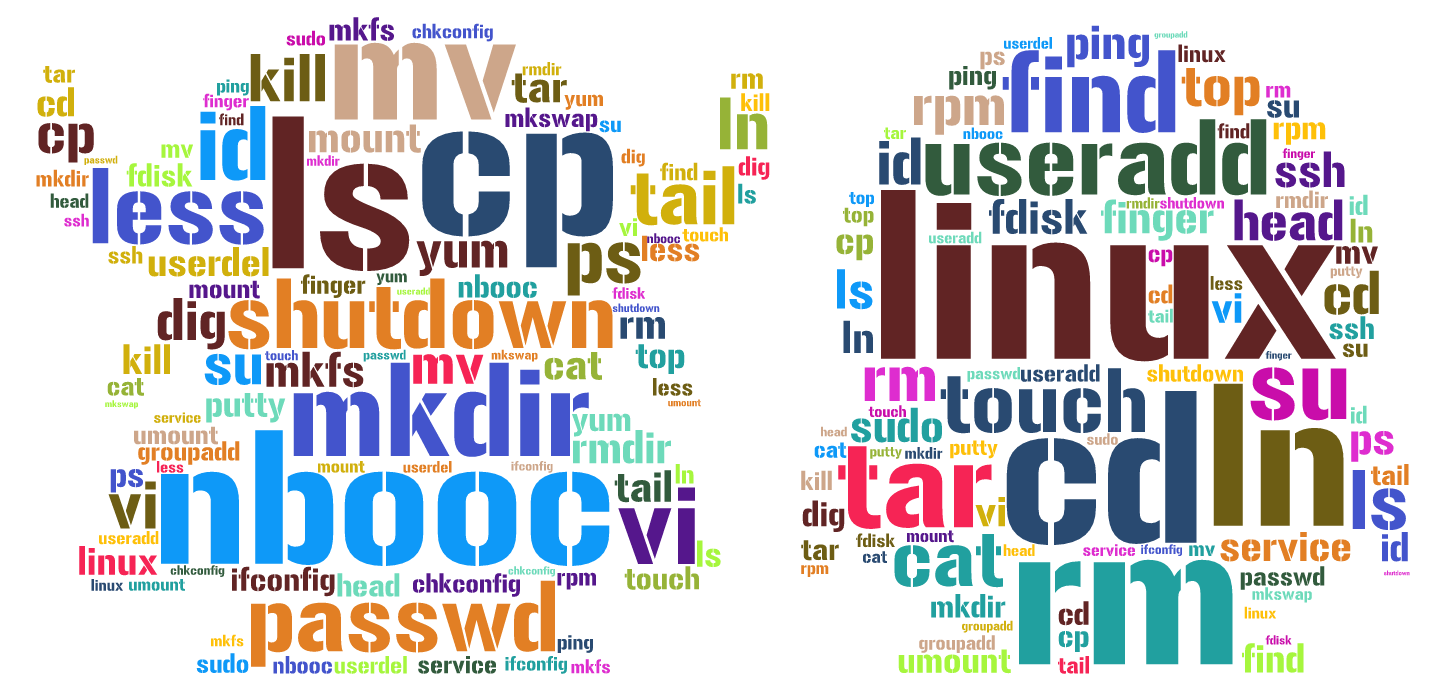
当前课程知识点:Gerontological Nursing > CHAPTER 1: General Introduction to Geronological Nursing > 1.5 Theories Related to Elderly Care > 1.5.2 Disengagement Theory and Activity Theory
返回《Gerontological Nursing》慕课在线视频课程列表
返回《Gerontological Nursing》慕课在线视频列表
同学们好
今天我们要学习的内容是
《隐退理论与活跃理论》 我们先来看这样一个案例
吴某 60岁
刚刚退休 与老伴居住
擅长写作与绘画
退休前是文化站站长
工作虽然琐碎
但每天上班让他感到很充实很开心
吴某退休后
就一直在家闲着
一下子没有事情可做了
他感到非常失落
吴某最近都闷在家里
哪也不想去
老伴开了家小豆腐坊
让他帮她干活
他也不想做
老伴心里特别着急
这个案例可以用哪些理论进行解析
应该如何帮助吴某
我们就带着这两个问题进入今天的课堂
隐退理论
disengagement theory
于1961年由卡明和亨利提出
该理论认为社会平衡状态的维持
决定于社会与老年人
退出相互作用所形成的彼此有益的过程
这一过程是社会自身发展的需要
也是老年人本身衰老的必然要求
隐退理论的前提是
隐退是一个逐渐进行的过程
隐退是双方皆感满意的过程
隐退是不可避免的
所有社会系统都有隐退的现象
因此 隐退是一种常模
该理论认为
老年期不是中年期的延续
老年期有自身的特殊性
老年人逐步走向以自我为中心的生活
生理 心理以及社会等
方面的功能也逐步丧失
与社会的要求正在渐渐拉大距离
因此
对老年人最好的关爱应该是让
老年人在适当的时候
以适当的方式从社会中疏离
不再像中年期或青年期那样拼命奋斗
此外
一个社会要保持持续的发展
就必须不断地进行新陈代谢
进入老年社会
就像选手将接力棒交给下一个选手一样
自己从社会角色与社会跑场中隐退
这是成功老化所必须经历的过程
也是一种有制度 有秩序
平稳的权力与义务的转移
这个过程是促进社会进步 安定
祥和的完善途径
也是人类生命世代相传
生生不息的道理
冯巩 62岁
是一名优秀的相声及小品演员
他连续参加了32年春晚
给全国观众带来了很多笑声
但2019年春晚
冯巩没有参加
央视特别节目现场连线冯巩
他用熟悉的 我想死你们啦
和观众打招呼
非常亲切
对于自己今年没上春晚
冯巩表示
这是自然规律
自古英雄出少年
让更多年轻人的新面孔绽放在春晚舞台上
这是观众们的期盼
也是我们老一辈的愿望
冯巩对退出春晚舞台的解释
正是印证了老年人的隐退理论观点
我们再来分析下课前的案例
案例中老吴同志没有很好的适应退休的生活
正是隐退不良的表现
根据隐退理论
护士应注意评估
那些正在经历参与社会活动减少的老年人
提供适度的支持和指导
以维持其平衡
虽然隐退理论具有一定的科学性
但该理论存在着一定的缺陷
例如该理论很容易使人
将老年人等同为无权 无能 无力的人
使社会对老年人的漠视合情化
排斥合法化 歧视合理化
隐退理论认为天下没有不散的筵席
老年期不是中年期的延续
而有一个理论恰好与隐退理论相反
那就是活跃理论
活跃理论
activity theory
又称活动理论
1961年由Havighurt提出
其主要的论点是认为
老年是中年期的延伸
主张老年人应与中年时代一样
从事社会上的工作及参与社会上的活动
而且
社会活动是生活的基础
对各个年龄阶段的人来说都同样重要
对于一个正在变老的人
活动尤为重要
活动是老年人认识自我 获得社会角色
寻找生活意义的主要途径
老年人生理 心理和社会等
各方面的健康均有赖于继续参加活动
Havighurst等于1963年 1968年先后
发表的美国堪萨斯市老年人生活研究中指出
参加志愿者组织 教堂等各项活动的老人
能够显示多元且丰富的创造性角色
和自我定位
其研究结果支持活动理论的观点
即高龄者若能积极参与社会活动
即可满足其心理及社会层面的需求
并增进生活的适应度与满意度
在现实生活中也不难发现
老年人常常有一种不服老的感觉
一些老年人常常有一种
急迫发挥余热的冲动
我们再回顾下课前案例中的老吴同志
他因为退休在家闲着
一下子没有事情可做了
他感到非常失落
都闷在家里 哪也不想去
老伴让他帮忙干活 他也不想做
老吴同志为什么会出现这种情况呢
活跃理论认为
老年人的生理 心理及社会的需求
不会因为其生理 心理及身体
健康状况的改变而改变
一个人到年老时仍然期望积极参与社会活动
保持中年生活型态
维持原有角色功能
以证明自己仍未衰老
那么我们应该如何帮助老吴呢
从活跃理论的角度来说
我们应该要继续鼓励
老吴同志发挥特长
实现老有所为
具体可以是
一 与文化站联系
请他们将一些琐事继续交由老吴负责
例如定期出黑板报等
帮助他顺利度过过渡期
二 可以协助吴某在村里开办免费的培训班
教授小朋友们绘画 写作等
一方面使吴某提升自我效能感
一方面为村里做贡献
三 还可以鼓励老吴帮助老伴儿干些活儿
可以为老伴儿的豆腐坊做宣传
同隐退理论一样
活跃理论也存在着一定的局限性
一方面
活跃理论没有注意到老年人之间的个体差异
不同的老人对社会活动的参与要求是不同的
另一方面
活跃理论也没有注意到
年轻老人与高龄老人的差别
这两个年龄组的老人
在活动能力和活动愿望上差别都是很大的
不可一概而论
通过对这两个理论的学习
我们知道
根据隐退理论
护士需注意评估
那些正在经历参与社会活动减少的老年人
提供适度的支持和指导
以维持其平衡
根据活跃理论
护士要辨别那些
想要维持社会活动角色功能的老年人
并评估其身心能力是否足以从事某项活动
帮助老年人选择力能所及并且感兴趣的活动
上到这里
有些同学可能会认为
隐退理论和活跃理论是两个完全相反的理论
是一种有我无你的状态
但实际上真是这个样子吗
想知道答案的同学可以进一步查阅下列文献
进行深入学习
好
今天我们的课就讲到这里
谢谢
-1.1 Human Life Expectancy and Age Classification of the Elderly
--Human Life Expectancy and Age Classification of the Elderly
--【Vedio Recommendation】 How do we measure life expectancy ?
-1.2 Population Aging
--【Literature Recommendation】World Report on Ageing and Health: 2015
-1.3 Influence and Countermeasures of Population Aging
--Influence and Countermeasures of Population Aging
--【Literature Recommendation】World Population Ageing Highlights:2019
-1.4 Goals and Principles of Elderly Care
--Goals and Principles of Elderly Care
--【Book Recommendation】Evidence-Based Geriatric Nursing Protocols for Best Practice
-1.5 Theories Related to Elderly Care
--1.5.1 Personality Development Theory and Life Review
--1.5.2 Disengagement Theory and Activity Theory
--1.5.3 Self-efficacy and Chronic Disease Management
--【Vedio Recommendation】8 Stages of Development by Erik Erikson
--【Literature Recommendation】Activity Theory, Disengagement Theory, and Successful Aging
--【Book Recommendation】Self-Efficacy in Changing Societies
-1.6 Elderly Support and Elderly Care
--1.6.1 Concepts of Elderly Healthcare, Elderly Support and Elderly Care
--1.6.2 Home-based Elderly Care Model
--1.6.3 Institutional Elderly Care Model
--1.6.4 Integrated Medical and Nursing Care Model
--【Vedio Recommendation】Day in the Life of Home Care
--【Website Recommendation】Official Website of the National Institutes of Health
-Concept Map
--【Concept Map】General Introduction to Geronological Nursing
-【Test】CHAPTER 1
-2.1 Aging Changes in the Elderly
--2.1.1 Aging of the Respiratory System
--2.1.2 Aging of the Cardiovascular System
--2.1.3 Aging of the Digestive System
--2.1.4 Aging of the Urinary System
--2.1.5 Aging of the Endocrine System
--2.1.6 Aging of the Motor System
--2.1.7 Aging of the Nervous System
--2.1.8 Aging of the Sensory System
--【Literature Recommendation】Exercise Attenuates the Major Hallmarks of Aging
--【Book Recommendation】Hazzard's Geriatric Medicine and Gerontology
-2.2 Comprehensive Health Assessment of the Elderly
--Comprehensive Health Assessment of the Elderly
--【Literature Recommendation】Instruments to evaluate mental well-being in old age: a systematic review
-2.3 Principles of Elderly Health Assessment
--Principles of Elderly Health Assessment
-2.4 Assessment of the Functional Status of the Elderly
--Assessment of the Functional Status of the Elderly
--【Literature Recommendation】The Lawton Instrumental Activities of Daily Living (IADL) Scale
-2.5 Assessment of Cognitive Function in the Elderly
--Assessment of Cognitive Function in the Elderly
-2.6 Assessment and Adjustment of the Living Environment for the Elderly
--Assessment and Adjustment of the Living Environment for the Elderly
-Concept Map
--【Concept Map】Elderly Health Assessment(1)
--【Concept Map】Elderly Health Assessment(2)
-【Test】CHAPTER 2
-3.1 Overview of the Psychological Characteristics of the Elderly
--Overview of the Psychological Characteristics of the Elderly
-3.2 Influencing Factors of Psychological Changes in the Elderly
--Influencing Factors of Psychological Changes in the Elderly
-3.3 Common Psychological Issues and Their Management in the Elderly
--3.3.1 Common Psychological Issues and Their Management in the Elderly (1)
--3.3.2 Common Psychological Issues and Their Management in the Elderly (2)
--【Book Recommendation】Development Through the Lifespan
-3.4 Depression in the Elderly
--3.4.1 Overview of Depression in the Elderly
--3.4.2 Clinical Symptoms of Depression in the Elderly
--3.4.3 Caring for Elderly Patients with Depression
--【Documentary Recommendation】Depression:Out of the Shadows
-3.5 Elderly Patients with Dementia
--3.5.1 Identification of Dementia Symptoms in the Elderly
--3.5.2 Intelligence Rehabilitation of Elderly Patients with Dementia
--3.5.3 Safety Care of Elderly Patients with Dementia
--【Website Recommendation】The Global Voice on Demaentia
-Concept Map
--【Concept Map】Elderly Mental Health and Mental Health Care
-【Test】CHAPTER 3
-4.1 Precautions for Daily Care of the Elderly
--Precautions for Daily Care of the Elderly
-4.2 General Care of Elderly Skin
--4.2.1 Characteristics and General Care of Elderly Skin
--4.2.2 Skin Itching and Its Management in the Elderly
--【Website Recommendation】American Academy of Dermatology
-4.3 Clothing Hygiene for the Elderly
--Clothing Hygiene for the Elderly
--【Literature Recommendation】The Design Methods of Functional Clothing for the Elderly
-4.4 Dietary Care for the Elderly
--4.4.1 Nutritional Needs of the Elderly and Influencing Factors of these Needs
--4.4.2 Dietary Care for the Elderly
--【Book Recommendation】Nutrition Care of the Older Adult: a Handbook for Dietetics
--【Website Recommendation】Nutrition for older persons
-4.5 Sleep Guidance for the Elderly
--4.5.1 Sleep Characteristics of the Elderly
--4.5.2 Sleep Guidance for the Elderly
--【Book Recommendation】An Occupational Therapist's Guide to Sleep and Sleep Problems
--【Website Recommendation】American Academy of Sleep Medicine
-4.6 Exercises Guidance for the Elderly
--4.6.1 Evaluation of Exercise Intensity in the Elderly
--4.6.2 Precautions Elderly Undertaking Exercises
--【Website Recommendation】American College of Sport Medicine
--【Book Recommendation】Handbook of Activities for the Elderly
-Concept Map
--【Concept Map】Elderly Daily Care
-【Test】CHAPTER 4
-5.1 Characteristics of Drug Metabolism and Pharmacodynamics in the Elderly
--Characteristics of Drug Metabolism and Pharmacodynamics in the Elderly
--【Website Recommendation】How Drugs Work In the Elderly
-5.2 Common Adverse Drug Reactions and Their Causes in the Elderly
--Common Adverse Drug Reactions and Their Causes in the Elderly
-5.3 The Principles of the Use of Medications in the Elderly
--The Principles of the Use of Medications in the Elderly
-5.4 Prevention of Adverse Drug Reactions in the Elderly
--Prevention of Adverse Drug Reactions in the Elderly
-5.5 Medication Compliance in the Elderly
--Medication Compliance in the Elderly
-Concept Map
--【Concept Map】Medication Safety and Care for the Elderly
-【Test】CHAPTER 5
-6.1 Falls in the Elderly
--6.1.1 Epidemiological Characteristics of Elderly Falls
--6.1.2 Risk Factors for Falls in the Elderly
--6.1.3 Prevention of Falls in the Elderly
--【Website Recommendation】CDC STEADI(Stopping Elderly Accidents, Deaths & Injuries Tool Kit)
-6.2 Dysphagia in the Elderly
-6.3 Urinary Incontinence in the Elderly
--Urinary Incontinence in the Elderly
-6.4 Constipation in the Elderly
-6.5 Dry Mouth in the Elderly
--【Website Recommendation】Academy of Nutrition and Dietetics
-6.6 Elderly Nutritional Deficiencies
--Elderly Nutritional Deficiencies - emaciation
-6.7 Visual Impairment in the Elderly
--Visual Impairment in the Elderly
--【Website Recommendation】Senior Eye Exams
-6.8 Senile Deafness
-6.9 Elderly Delirium
-6.10 Elderly Frailty
--【Literature Recommendation】Frailty in elderly people/Frailty in older people
-6.11 Pneumonia in the Elderly
-6.12 Hypertension in the Elderly
--【Literature Recommendation】2018 Chinese Guidelines for Prevention and Treatment of Hypertension
-6.13 Stroke in the Elderly
-6.14 Stable Angina in the Elderly
--Stable Angina in the Elderly
-Concept Map
--【Concept Map】Nursing Care for the Elderly with Common Health Problems and Diseases
-【Test】CHAPTER 6
-7.1 Concept of Hospice Care
--【Website Recommendation】 Definition of Palliative Care,WHO
-7.2 Death Education
--【Book Recommendation】The Meaning of Death by Herman Feife
-7.3 Nursing for Pain in the Dying Elderly
--Nursing for Pain in the Dying Elderly
-7.4 Nursing for Major Bleeding in the Dying Elderly
--Nursing for Major Bleeding in the Dying Elderly
-7.5 Nursing for Delirium in the Dying Elderly
--Nursing for Delirium in the Dying Elderly
-7.6 Nursing for Dyspnea in the Dying Elderly
--Nursing for Dyspnea in the Dying Elderly
--【Website Recommendation】The Hospice and Palliative Nurses Association,HPNA
-7.7 Psychological Problems and Nursing in the Dying Elderly
--Psychological Problems and Nursing in the Dying Elderly
--【Book Recommendation】On Death and Dying ,by Elisabeth Kübler-Ross
-7.8 Grief Counseling for the Widowed Elderly
--Grief Counseling for the Widowed Elderly
--【Book Recommendation】I Wasn't Ready to Say Goodbye,by Noel·Brook,Blair·Pamela
-Concept Map
--【Concept Map】Hospice Care for the Elderly
-【Test】CHAPTER 7
-Final Exam



